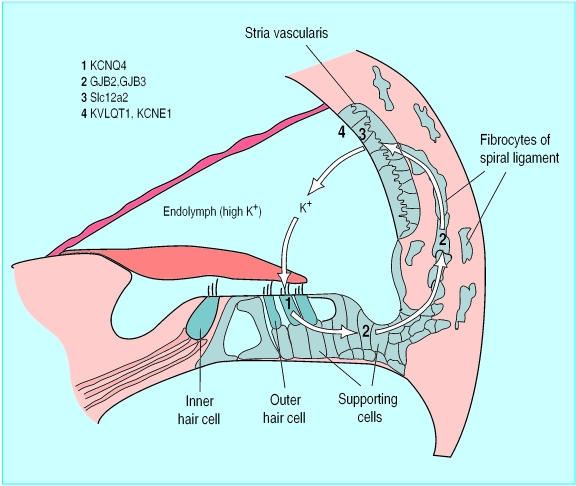Figure 3.
Key aspects of potassium recycling in cochlear duct. Potassium entering stimulated hair cells may be removed via potassium channel encoded by KCNQ414 and taken up by cells below. It is then passed through network of gap junctions linking adjacent cells around cochlear duct to stria vascularis on side wall of duct. Connexin 26, connexin 31, and connexin 30 (encoded by genes GJB2, GJB3, and GJB6) are components of these gap junctions.8,9,16,17 Potassium is then pumped into strial cells with help of Na-K-Cl cotransporter (encoded by Slc12a2),18,19 from which it is passed back into endolymph via ion channels formed from products of KVLQT1 and KCNE1.20,21 Mutations in any of these genes can cause deafness in humans or mice, indicating that correct ionic milieu of sensory hair cells is essential for their continued function

